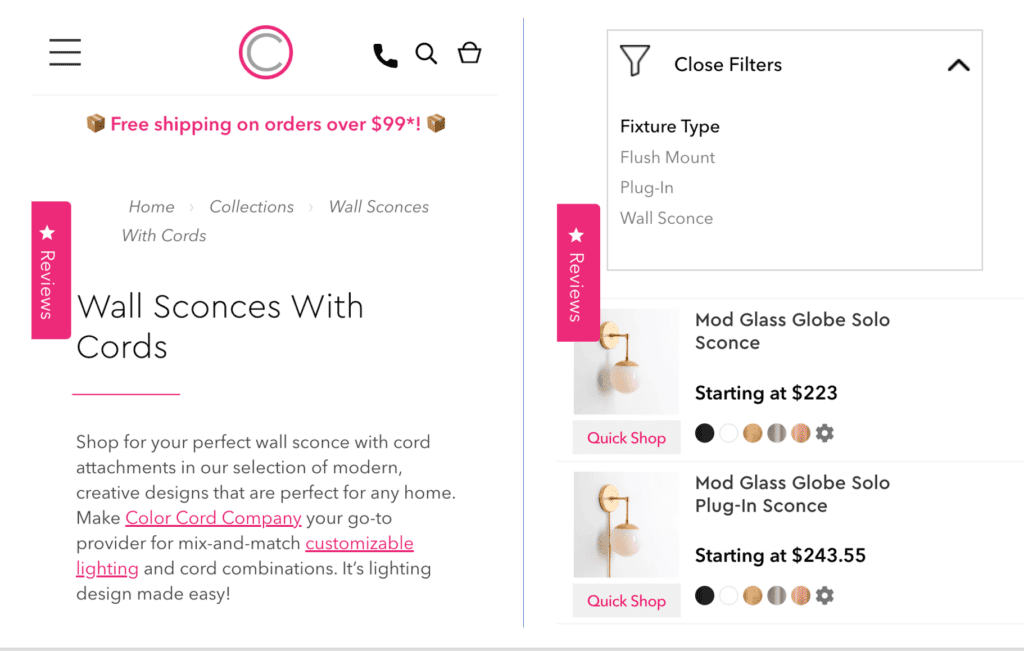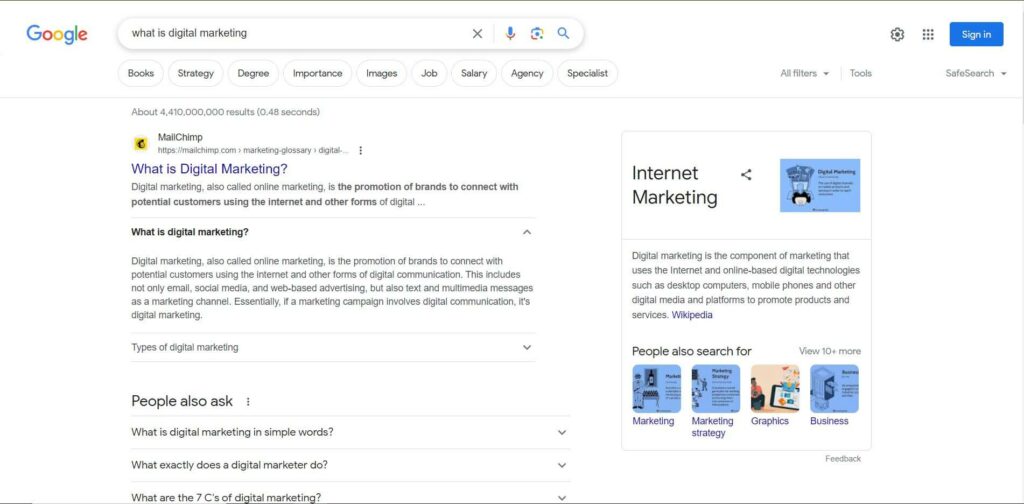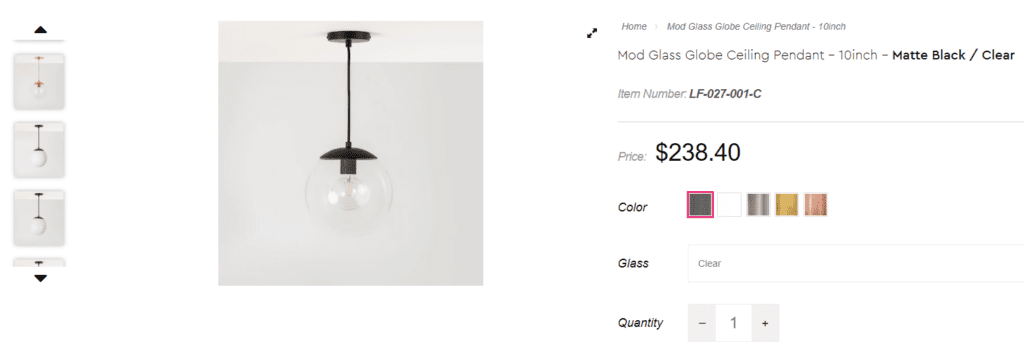
When building out a Shopify store, it’s easy to get fixated on certain elements, whether that’s implementing SEO or refining its design. Usually, the emphasis is decided by the web agency you’re working with or the expertise you have in-house.
However, ecommerce is a hotly contested space. At the last count, Shopify was home to over 4.6 million websites globally. To stay competitive and increase sales, you have to combine technical SEO and web design. Together, these help you boost traffic, on-site conversions, and build a foundation that naturally supports faster growth.
You can use some of these pointers to level up SEO and web design for your Shopify store.
Table of Contents
Technical SEO
Technical SEO is vital for ecommerce and Shopify in particular. It’s a much more sustainable way to get customers than running paid ads which typically offer a short-term boost. Furthermore, SEO on Shopify can be tricky for the average business owner and requires expert assistance. If you get it right, you’re likely to have a significant competitive advantage over other Shopify brands and stores.
Page Load Speed
This is one of the most important parts of optimizing your Shopify site. Online shoppers are highly disinclined to wait if a site takes too long to load. In fact, if the page load time so much as climbs to three seconds, the probability of bounce increases by 32%.
Boosting page load speed helps significantly with Shopify store SEO. You can do this by improving your hosting and deploying a Content Delivery Network (CDN), as well as compressing images on your web pages to make them load faster.
Mobile Responsiveness

Ecommerce store owners are increasingly considering building mobile-first websites. It’s no surprise when you see that mobile devices account for half of all ecommerce traffic and 43.4% of sales. If your site isn’t optimized for mobile, you’re likely missing out on business from non-desktop users.
What’s more, not optimizing for mobile is also bad for your Shopify store’s SEO. Google indexes the mobile version of your website first, by default, which can affect the ranking of an unresponsive store.
Mobile responsiveness is all about adapting the shopping experience for a smaller screen. This means simplifying navigation and optimizing on-screen space to highlight product images and CTAs. You might also want to cut back on pop-ups and reduce form-fills, which are more cumbersome to deal with on a mobile device.
Keyword Optimization
Keyword optimization is both a technical and strategic activity. The right keywords make your site discoverable for customers on search engines and are crucial for Shopify store SEO.
Try and pick keywords that match your customers’ intent. You can use a variety of tools to discover them, such as the Keyword Planner, Ahrefs, and Semrush. You can also conduct competitor research and see what keywords they are ranking for.
You’ll want to integrate the keywords you have chosen throughout your on-site copy, including them in your metadata to inform Google what each page is about.
A good rule of thumb for embedding keywords is to aim for 1% keyword density in your copy. It’s important to avoid keyword stuffing (placing the keyword too frequently within the copy), which is a big no-no from Google’s standpoint.
Structured Data
Adding structured data can make a huge difference to your Shopify store’s SEO. It’s essentially website code that helps search engines understand the content of that page and provides additional information that the engine can feature in its results pages via ‘rich snippets.’
Optimizing your data is more important than ever due to a change in Google’s algorithm concerning FAQ schema. This schema is now primarily reserved for .org and .edu types of sites, which means optimizing for FAQ schema is nowhere near as important as it once was.

Other examples of structured data results include knowledge graphs, rich cards, breadcrumbs, and Accelerated Mobile Pages (AMPs), all of which can be used to boost your Shopify store SEO. You can find a full list of markups used by the major search engines on Schema.org.
Site Structure and Indexing
Site structure plays a big part in your SEO. It refers to the way your website is organized and how your pages are linked to one another. Well-organized sites are easier for search engines to understand and have a much better chance of ranking well.
You can improve your Shopify store SEO by creating a solid hierarchy for your website. It should begin with your home page and the main categories on your navigation and branch out from there. Interlinking can also help you communicate web page relevance, boost ranking, and provide more context for search engines.
Make sure you create an XML sitemap outlining your site structure and submit it to various search engines. This will help them crawl and index all your web pages quicker.
Shopify Web Design
Your Shopify store’s web design and SEO are inextricably linked. Improved design leads to a better user experience on your website, which leads to more conversions, and it also reflects well for search algorithms. Google likes to serve up results it thinks will provide good value for users. Therefore, it will prioritize websites where visitors are perceived to have a better experience, indicated by metrics such as bounce rate and dwell time.
Navigation is key to delivering an optimal shopping experience, especially for stores with large product catalogs. How you set up your site structure so that people can easily find what they’re looking for can determine how long and how much people spend on your online store.
Categories and subcategories should be named and accessible via menus so that users can intuitively locate them. This is particularly important on mobile devices. With less screen space to accommodate menus, web designers have to be creative in how they arrange navigation, such as through collapsible ‘hamburger menus.’
Navigation is closely tied to your site structure and contributes heavily to your Shopify store’s SEO value.
Cohesive Brand Image
One of the first things visitors will notice is the uniformity of design, including the fonts and color scheme, across your website. A consistent design language contributes to a strong brand identity, creating a memorable experience for shoppers.
You can also use Shopify web design to better resonate with your target audience and create a lasting connection. Think about some of the iconic images and color schemes associated with brands, such as the Starbucks and Apple logos or the Snickers font and color combination. Each new web page or collateral that your customers browse reinforces that brand identity and helps improve brand recall for them.
Product Pages

Put some thought into how you arrange the different elements on your product pages. Ideally, your images should take center stage with multiple high-resolution shots that show your customers what they can expect.
A minimalistic approach is often best with on-page copy, especially on mobile where people are averse to scrolling for too long. Include the minimum amount of text you need to help with your Shopify store SEO and provide the customer with essential details, such as product names, prices, and descriptions. Another good principle of Shopify web design is to position your CTAs so that they’re visible and easily accessible. Additional copy can always be added towards the bottom of the page, so as to not interfere with the rest of the user’s page experience.
Engaging Videos
Video is unmatched when it comes to engaging potential customers online. According to Wyzowl, 84% of people have purchased a product or service after watching a video about it. Over 72% of businesses have seen improved conversion rates with videos.
They’re also regarded positively by search algorithms and excellent for your Shopify store’s SEO. Consider embedding a variety of videos, such as product demos, explainers videos, testimonial videos, and more on your website to increase sales and traffic.
Consult Shopify Experts to Accelerate Sales
Shopify store SEO and web design are tricky to perfect but can be a breeze with the right partner. Coalition Technologies is an accredited Shopify Plus Solutions Partner and one of the world’s leading SEO and web agencies. Our team consists of seasoned professionals who’ve generated over half a billion dollars in revenue for hundreds of clients worldwide.
Reach out to us to launch or level up your ecommerce store today. Schedule a personalized consultation and receive a free site audit and strategy review for your brand.

